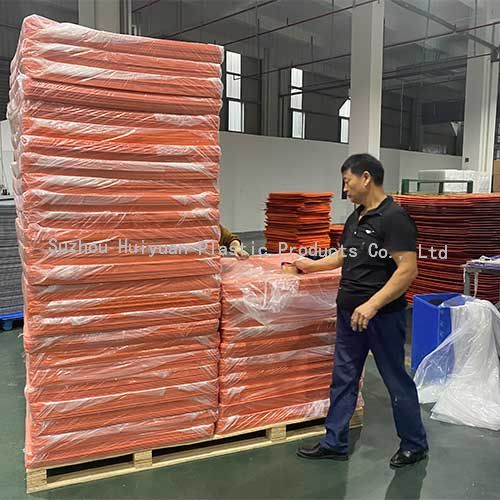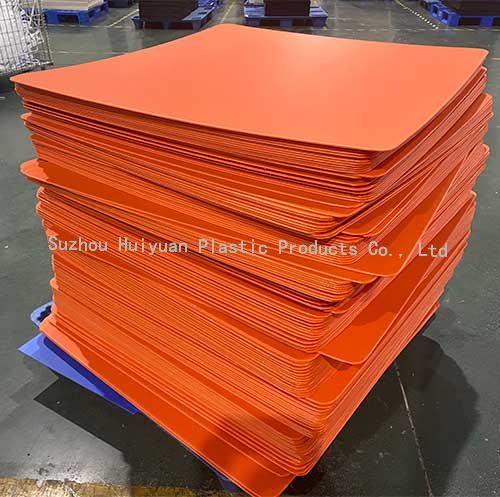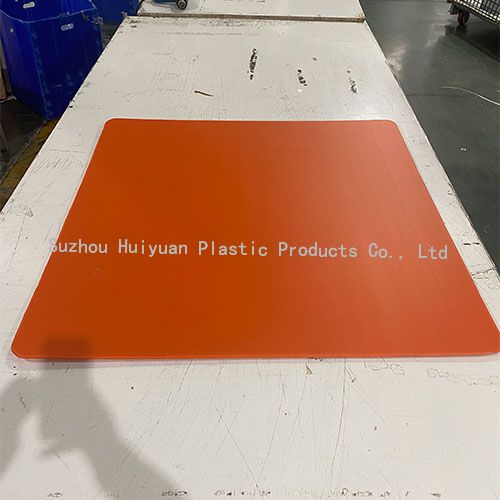©Copyright 2019 Suzhou Huiyuan Plastic Products Co., Ltd All rights reserved. Terms and Conditions Designed by iwonder.cnSite Map
In modern logistics, packaging efficiency and product protection are essential. Whether you are shipping beverages, food products, electronics, or consumer goods, having the right pallet accessories makes a significant difference. One of the most commonly used accessories is the plastic layer pads for pallets, which serve as dividers between stacked layers of products. These pads are designed to enhance stability, improve stacking, and protect goods from damage during storage and transport.
But with so many options available, how can you determine which pallet layer pads are best suited for your business? In this guide, we’ll explore the key features, benefits, and selection criteria to help you make the right choice.

Plastic layer pads for pallets are flat sheets, usually made from polypropylene (PP) or polyethylene (PE), that are placed between layers of products stacked on a pallet. They are lightweight yet durable and offer protection against dust, moisture, and mechanical damage. Unlike cardboard sheets, which can absorb liquids and weaken over time, plastic pads provide long-lasting performance in both dry and wet conditions.
These pads are often used in industries like:
Food and Beverage: To separate bottles, cans, or cartons.
Pharmaceuticals: For keeping products stable and hygienic.
Electronics: To protect delicate items from vibration and stacking pressure.
General Retail: For organizing goods during storage and distribution.
Investing in plastic pallet layer pads offers multiple advantages compared to traditional paper or cardboard dividers.
Durability and Longevity
Plastic is resistant to water, chemicals, and tearing, making the pads reusable for multiple shipping cycles.
Hygiene and Cleanliness
Since they don’t absorb moisture, these pads can be easily cleaned and sanitized, an important requirement for industries such as food and pharmaceuticals.
Improved Load Stability
The pads prevent shifting of goods during transportation, minimizing product loss and damage.
Lightweight but Strong
Despite being lightweight, plastic pads have a strong load-bearing capacity and can handle heavy stacking without deforming.
Cost Savings Over Time
While the upfront cost may be higher than cardboard alternatives, the reusability of plastic pads reduces overall packaging expenses in the long run.

When selecting the right pallet layer pad, there are several important factors to keep in mind:
Most plastic pads are made from PP (polypropylene) or HDPE (high-density polyethylene).
PP Pads: Offer excellent chemical resistance and rigidity.
HDPE Pads: Provide better impact resistance and toughness.
Choosing the material depends on your specific application. For heavy-duty use, HDPE may be more suitable, while PP works well for general goods.
The thickness of the pad directly influences its strength. Common thicknesses range from 2mm to 6mm. Thicker pads provide more durability but also add weight, so balancing protection with handling convenience is essential.
Plastic pads can come with smooth, ribbed, or textured surfaces. A textured surface provides extra friction, preventing slipping between stacked goods, while smooth surfaces are easier to clean.
Standard sizes are available to fit Euro pallets (1200 x 800mm) and industrial pallets (1200 x 1000mm). However, many manufacturers also offer custom-cut pads to suit unique requirements.
For industries like food and pharmaceuticals, it’s crucial to choose pads that meet hygiene and safety standards. Some manufacturers offer pads with antibacterial coatings.
Opt for pads that can be reused many times. At the end of their lifespan, many plastic pads are recyclable, making them an environmentally friendly choice compared to single-use cardboard.
A key question many businesses face is whether to use plastic or cardboard dividers. Here’s a quick comparison:
Durability: Plastic lasts far longer than cardboard.
Moisture Resistance: Plastic resists liquids, while cardboard weakens when wet.
Cost Efficiency: Cardboard is cheaper upfront but less cost-effective in the long run.
Environmental Impact: Both can be recycled, but plastic has a longer usable life, reducing waste.
If your operations involve repeated use, heavy loads, or exposure to moisture, plastic layer pads for pallets are the superior option.

The use of plastic pallet layer pads extends across many industries:
Beverage Industry: They keep bottles and cans stable during transport, reducing breakage.
Food Packaging: Used for separating cartons, trays, and other products.
Electronics: Helps in organizing sensitive devices and preventing surface damage.
Pharmaceuticals: Maintains hygiene by avoiding contamination risks.
Automotive: Protects spare parts and components during bulk transport.
When evaluating the cost of a pallet layer pad, it’s important to look beyond the initial price. Factors such as reusability, durability, and reduced product loss play a critical role in overall savings. While plastic pads might be more expensive upfront than cardboard, they can withstand hundreds of cycles, making them highly cost-efficient.
Businesses should also consider bulk purchasing to reduce costs per unit. Many manufacturers offer discounts for large orders, especially when supplying to warehouses or distribution centers.
With increasing attention on sustainability, companies are looking for packaging solutions that balance efficiency with eco-friendliness. Plastic pads are not single-use items—they are designed for long-term use and are fully recyclable at the end of their service life. Choosing them helps reduce overall packaging waste while maintaining high performance.
To maximize the lifespan of your pads, follow these maintenance tips:
Clean Regularly – Wash pads after use, especially in food and beverage industries.
Store Properly – Keep them in dry, flat stacks to avoid warping.
Inspect Frequently – Check for cracks or damage and replace worn-out pads.
Rotate Usage – Using pads evenly helps prevent overuse of specific batches.
Selecting the right plastic layer pads for pallets requires understanding your industry needs, load type, and logistics conditions. By evaluating factors such as material, thickness, hygiene, and cost efficiency, you can choose the best option to protect your products, improve stability, and reduce long-term expenses.
Whether you are in the food and beverage sector, electronics, or general retail, plastic pallet layer pads provide a reliable, hygienic, and reusable solution. Unlike cardboard, they deliver long-lasting performance and sustainability benefits, making them a smart investment for modern supply chains.
If your goal is to ensure product safety while cutting costs and improving operational efficiency, a well-chosen pallet layer pad is the right move.
By continuing to use the site you agree to our privacy policy Terms and Conditions.